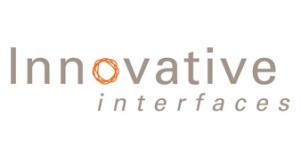 Decision Center, the collection management solution developed by Innovative Interfaces Inc (III), released new features that will help users manage floating collections across multiple branches and, separately, anticipate demand for new titles. Decision Center, which replaced III Reporter when it went into general release in June, is designed to work with III’s Millennium ILS or its Sierra Services Platform.
Decision Center, the collection management solution developed by Innovative Interfaces Inc (III), released new features that will help users manage floating collections across multiple branches and, separately, anticipate demand for new titles. Decision Center, which replaced III Reporter when it went into general release in June, is designed to work with III’s Millennium ILS or its Sierra Services Platform.
The new floating collections module will be especially useful addressing “pooling” and “drought” issues that can arise when libraries allow patrons to have books sent to their local branch or check out titles from one branch and return them to another. For example, at Tulsa City-County Library, OK (TCCL), a beta tester for III, one branch is regularly inundated with returns of picture books checked out from other branches, said TCCL Collection Management Manager Susan Anderson.
“Every month, month after month after month, they have more picture books turned in at their location than they have shelving for,” she said. “Right now, we are manually moving those back to other location, just by staff picking out books to send back.” Anderson said that the floating collection features will make it much easier for the branch to determine which books it has multiple copies of and which books have been moved from other locations. TCCL just recently received documentation for the new features, and is still in the process of determining how the new lists and reports generated by the system will be integrated into their existing workflow, Anderson said. “But it’s definitely going to assist us. No one needs five copies of Green Eggs and Ham. Those are prime, easy targets for moving to a new location.”
Similarly, Anderson added, westerns may be more popular in some locations, while mysteries are more popular in others. The new floating collection management tools will help TCCL maximize the use and availability of its collection by identifying where different titles, authors, and genres will be most in demand, she hopes.
“Some westerns are more popular in one location than another, but that doesn’t mean a western isn’t going to land in a location where the demand is not very high,” she explained. “I’m hoping it will also help us identify things that have landed at a place where demand is not great and we can move those back to where they will check out more.”
Even prior to the launch of these new tools, Decision Center had already proven helpful for analyzing trends at each of TCCL’s 24 branches, Anderson added.
“We’ve been looking at collection size and use, and trying to make sure collections are optimally sized for that location and [curated] for the interests of that neighborhood,” she said. “We hadn’t been able to do that type of analysis before. There’s simply no way to do that, really—compare, call number by call number, what’s getting used the most.”
Information about these trends had been primarily anecdotal, she explained. The Decision Center reports generate figures that can reveal or confirm perceived trends, help support a branch’s request for materials, or generate discussions that lead to a deeper understanding of those branch-by-branch trends, Anderson said.
Branch Profiles
TCCL Materials Selector Amanda Owens has been using Decision Center’s collection use and subject use reports to generate profiles of each branch, factoring in everything from available space by branch, to which genres are popular at each branch.
“I order adult fiction in hardback, trade paperback, mass market, and large print, and in the past I’ve had templates set up for how I distribute those,” Owens explained. “I try to distribute them fairly. But some branches are a lot bigger than others, and there are different types of communities. I’ve redone my template for how I order, so that I’m not placing things at branches where they’re not going to check out, and I am placing them where they’ll move. We’re trying to reduce waste and be a little smarter about our spending and where we place things.”
These branch profiles require upfront work, but ultimately, they help the TCCL better understand what moves where, whether a branch has the right percentage of materials and space devoted to adults versus children or media versus print, and analyze of usage of the collection matches up well with the usage of the building, Anderson said.
“Is that the way people use that building? Or do we need more meeting space and computers? Or do we need more large print at these locations? And we have to keep in mind that these things change over time, and sometimes they change rapidly,” she explained.
The latest Decision Center release also includes a popular authors module that will help libraries anticipate how many titles should be purchased based on factors including current holdings and collection usage—which is especially relevant in the case of titles in a series—as well as an author’s past popularity at the library and the broader marketing hype surrounding a new release, according to iii Senior Product Manager Eve-Marie Miller. And, several back-end administrative functions have been enhanced, allowing users to show and hide different fields within reports.
These new modules are free to current Decision Center subscribers, and Principal Software Engineer Ben Weinstein said that III is planning to continue to make regular, incremental enhancements to the collection management solution going forward.
“We’re trying to release on a more frequent basis, so we’re doing smaller releases and trying to get them out more often, rather than have an end-of-the-year, monolithic release,” he said.


